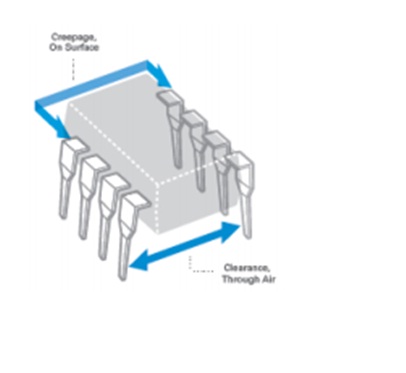What is Reinforced Insulation?
The reinforced insulation is an improved basic insulation with such mechanical and electrical properties that, in itself, the insulation provides the same degree of protection against electrical shock as double insulation. The reinforced insulation has two separate levels of protection which provide basic as well as the extra insulation.
The construction and performance of the reinforced insulation ensure that the equipment is still safe even when the basic insulation fails. The reinforced insulation, just like the double insulation ensures that even if one of insulation layer fails, the remaining layer will continue providing insulation, hence making the device or equipment safe. Its ability to provide enhanced protection allows it to be classified as double or robust insulation.
The reinforced insulation has the same level of insulation just like a double insulation. The insulation between the dangerous voltages and user-touchable circuits or safe voltages is provided by means of a single layer. However, this is a homogeneous layer made of several sheets of insulation that cannot be tested as single insulation layers but usually tested as one piece.
The insulation provides a physical separation between the solder tracks or joints, cores, windings, etc. This provides protection against electric shocks in addition to an adequate clearance either by one or two insulation levels or by a physical spacing from the live parts.
Electronic components may require additional structural enchantments in terms of meeting a minimum thickness of the insulating layer resulting from multiple insulation film layers. Other requirements include an increased clearance and creepage as well as passing the thermal test, surge tests and more.
The clearance distance refers to the shortest distance between two conductive parts through the air. While the creepage distance refers to the shortest distance between two conductors through the air and along the surface of the component’s insulating material.
IC Clearance and creepage – Image Credit
This reinforced insulation is common in the active parts of an electrical equipment or circuit to provide a single and robust level of insulation. Typical components that are constructed with a reinforced insulation include optocoupler and power transformers. These will usually have a minimum insulation thickness of 0.4mm. Others include reinforced insulation cables, reinforced insulation transformers, reinforced insulated meter, reinforced insulation tape, etc.
Other than the protection against electric shocks, the reinforced insulation may provide a fail-safe operation that terminates the system activities when there is a failure. This helps in securing the components from damage by some of the faults.
The level of insulation is very critical and affects the form factor, performance, reliability and cost of equipment such as transformers.
